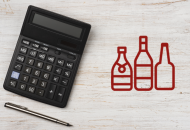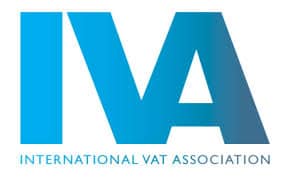If you are a French company that operates internationally, you should be aware of the different tax laws and regulations that apply to your activities. One of the most important taxes to understand is Value Added Tax (VAT), which can be difficult to manage and report. In this article, we explain how to charge VAT on sales made across national borders.
How to define VAT?
Value Added Tax or VAT is an indirect tax calculated on consumption, based on the added value of goods and services. It is a tax that is added to the price of the products that are subject to it. Indeed, almost all goods and services fall within its scope. VAT is collected by sellers in order to be paid to the State. Its amount is then shown on the invoices. As for the VAT rate applied, it should be noted that in France, it varies according to the product or service sold. On the majority of goods and services, the applicable rate is the normal VAT rate of 20%.
For reimbursable medicines, some shows and press publications, the VAT rate is 2.1%. The 5.5% VAT rate is applied to water, gas and all basic necessities. For sales to be consumed on site, bills for hotel accommodation, work on dwelling houses, the State levies an intermediate VAT rate of 10%.
It is important to note that in France, certain sectors of activity are exempt from VAT. These are sectors that operate in furnished apartments and bare buildings, Education, medical and paramedical care, delivery of recovered materials and new industrial waste, etc.…
How does VAT work internationally?
As for the applicable international VAT regime, the rules differ depending on whether you process transactions related to goods or services.
Deliveries of goods case
When a company exports outside the EU, it is carrying out an extra-Community operation. If trade is only with other EU countries, then it is intra-Community transactions.
Extra-Community operations:
For extra-Community trade, a French company that sells beyond EU borders (exports) is exempt from VAT. The exemption statement will then be indicated on the invoice, which is also one of the supporting elements of the export operation. When a French company imports goods from a country outside the EU, it must pay VAT.
Intra-Community operations:
Intra-Community transactions concern, on the one hand, intra-Community acquisitions (AIC) of goods made by a taxable company established in France from a taxable company established in another EU Member State. In this case, the VAT is beared by the buyer (in our example the French company)
On the other hand, if the said French company makes a sale of goods to a taxable company established in another EU Member State then it will have made an intra-Community delivery (LIC) and its operation will be exempt from VAT.
Namely that the VAT numbers of the companies must appear on the invoice which justifies the operation carried out.
Services case
In order to better understand how VAT is invoiced when trading services internationally, it is first necessary to understand the concept of service. A service is defined as an intangible good. More specifically, if the activity cannot be defined as the delivery of goods, then it falls under the definition of provision of services. As an example, you have the transport services, the services offered within the framework of the construction of the buildings.
Just as in the context of VAT transactions on goods, here we distinguish several cases:
When the service provided is carried out between two companies;
When the service is carried out between a company and an individual;
Exceptions:
When the service is carried out between two companies, 2 situations can be distinguished: The case where the two companies are located in the same Member State, then it is the service provider who bears the VAT linked to the service and the case where the companies are not located in the same State, then it is the company receiving the service that bears the VAT linked to the operation. In the latter case, this company will bear the VAT according to the regulations of the place where it is located.
Similarly, if a company is called upon to provide a service for an international individual, the person liable for VAT will be the service provider.
However, it must be recognized that there are exceptions which do not obey the aforementioned rules. This is the case of :
- Services related to buildings (art. 259 A-2° of the CGI)
- Passenger transport services (art. 259 A-4° of the CGI)
- Provision of cultural, artistic, sporting, scientific, educational and entertainment services and similar events (art. 259 A-5° a))
- Short-term rentals of means of transport (art. 259 A-1° of the CGI)
- Restaurant and catering services art. 259 A-5° b) of the CGI)
The cases listed above are just a few examples. You can find all the exceptions in Directive 2008/8/EC of February 12, 2008.
How to calculate VAT?
As a business manager, you will have to take into consideration the following: VAT collected, deductible VAT & VAT credit. Each of these elements must be calculated and therefore must be identified beforehand.
Schematically, the VAT collected corresponds to the amount recovered on the sales made. Thus, for each sale of products or services subject to VAT, the amount of VAT collected is to be paid in full to the State. In the context of international sales operations, if a company carries out an operation during which it collects VAT, this amount will be paid in full to the French State.
Let’s suppose that in the context of its exchanges, company A has sold a product or service for 2000 euros excluding tax to company B. If the VAT rate applied to this transaction is 10%, company B will pay a total of 2 200 euros including VAT. Company A will then have to declare the 200 euros on its VAT return (CA3), which represents the amount of VAT collected for the benefit of the French State.
As far as deductible VAT is concerned, the principle remains the same. But the difference that arises here is that this VAT is borne on all purchase transactions that a company has carried out on its behalf. As soon as the VAT will have to be paid back to the French State, the company must deduct this amount from the VAT collected.
Let’s take our previous example: Company B will be able to deduct on its VAT return (CA3) the 200 euros paid under certain conditions, including that said purchase be allocated to taxable operations of company B.
At the end of each month, the company must draw up a statement of all VAT-related transactions. This operation consists of making a difference between all the VAT collected and the deductible one. And It is from this operation that the company will determine its tax situation in terms of VAT.
If this amount is positive, this sum corresponds to the VAT to be paid back to the State. Insofar as it is negative, the corresponding amount will be the amount that the State will pay back to the company. This amount is called VAT credit and it is recoverable in cash or deductible from the company’s next VAT operations.
If you have any questions regarding your VAT compliance, please do not hesitate to contact us here.






















